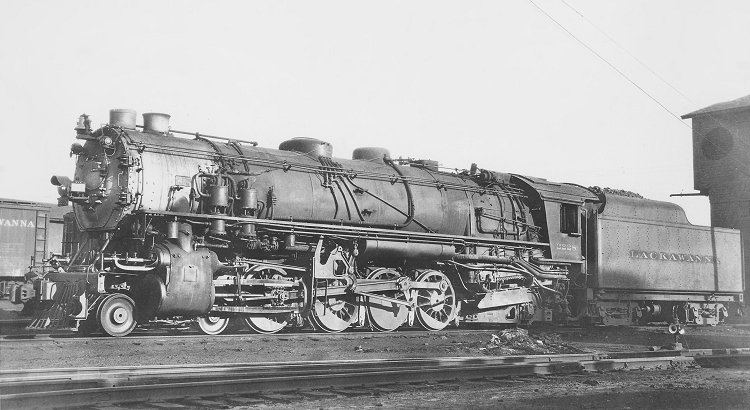The DL&W's class P-5 Mountain types were built in 1927 by American Locomotive Company as three-cylinder compound engines, and retained that configuration until retirement of the last member of the class in 1950. Their driver diameter was 63 inches, like that of most 2-8-2s, and like most Mikados their main rod connected to the third set of drivers instead of the second as with most 4-8-2s. Their outside, high-pressure cylinders had dimensions of 25x32 inches, with the inner low-pressure cylinder measuring 25x28 inches. Boiler pressure was 200 p.s.i., and they weighed 397,500 pounds and produced 77,579 pounds of tractive effort. They had 5010 square feet of evaporative heating surface, 1291 square feet of superheating surface, and a grate area of 80 square feet. No. 2228 poses at Secaucus, New Jersey in 1931 for an unidentified lensman in this image purchased from an eBay seller. The same photo appears in the Railfan.net ABPR Archive from Bud Laws.

|
|
|